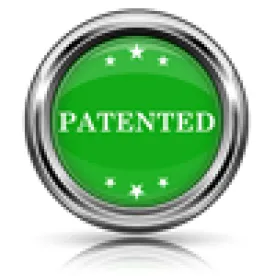In Akamai v. Limelight, Inc., Case Nos. 2009-1372, -1380, -1416, -1417, (Fed. Cir. Aug. 13, 2015) (en banc), the Federal Circuit updated and clarified the standards for determining if direct infringement has occurred in cases where the actions of multiple parties must be combined in order for all elements of a claim to be performed. It had been considered well-established that the “whoever” in the “whoever without authority makes, uses, offers to sell, or sells any patented invention … infringes the patent” of 35 U.S.C. § 271(a) must be a single entity, or an entity in combination with its agents, in order for direct infringement to occur. Additionally, since inducement under 35 U.S.C. § 271(b) requires that the induced party be liable for direct infringement, it is often the case that when multiple parties divide the elements of a claim between them, damages are not available for either direct infringement or for inducement. While the breadth of Akamai is not yet known, this case will change the result in at least some client-server software patent cases.
According to previous cases, an entity can be held accountable for the actions of others for the purpose of finding direct infringement when the others are agents of the entity or when the others are contractually obligated to perform the actions for the entity. Akamai provides two additional tests:
-
“where two or more actors form a joint enterprise, all can be charged with the acts of the other, rendering each liable for the steps performed by the other as if each is a single actor” and
-
“liability under § 271(a) can also be found when an alleged infringer conditions participation in an activity or receipt of a benefit upon performance of a step or steps of a patented method and establishes the manner or timing of that performance.”
Each of these new tests contains multiple elements that must be shown by the patentee to establish the infringer’s liability.
Joint enterprise liability was not at issue in Akamai, but the court outlined the four elements that must be shown to establish liability for a joint enterprise:
-
an agreement, express or implied, among the members of the group;
-
a common purpose to be carried out by the group;
-
a community of pecuniary interest in that purpose, among the members; and
-
an equal right to a voice in the direction of the enterprise, which gives an equal right of control.
With respect to conditional participation liability, both of the listed elements must be shown:
-
conditioning of participation in an activity or receipt of a benefit upon performance of a step or steps of a patented method, and
-
establishing the manner or timing of that performance.
For many commercial products, the “conditioning” element will be easy to show. For example, consider the following hypothetical claim:
A method comprising:
at a server, storing data;
at a client, generating a request for the data and transmitting the request to the server; and
responsive to receiving the request at the server, transmitting a response from the server to the client.
In this example, the client will not receive the response unless the client generates and transmits the request. Accordingly, the client will not realize the benefits of the method from the entity providing the server unless the client performs the method steps, and the “conditioning” element is met.
Showing the “establishing” element may be more difficult. Akamai does not address the minimum requirements of this element. The court found that evidence showed that Limelight provided a Technical Account Manager to “lead the implementation of Limelight’s services,” and thus “Limelight establishes the manner and timing of its customers’ performance so that customers can only avail themselves of the service upon their performance of the method steps.” However, the general rule established by the court is that the manner or timing of the performance must be established by the accused infringer.
Potentially, establishing the manner or timing of the performance will encompass many commercial activities. In the hypothetical example claim above, if the entity providing the server also provides a client application including a user interface to generate the request, the use of that application by a user to perform the “generating a request” step is in a manner established by the entity, even when the entity does not control the timing of the user’s action. Similarly, if the action on the client can only be performed while the server is running (e.g., to respond to the request), then the entity controlling the server at least arguably controls the timing of the performance.
Thus, while ideal claims will still read directly on a competitor, claims requiring actions by both a competitor and its clients are no longer dead on arrival, after Akamai.


 />i
/>i

